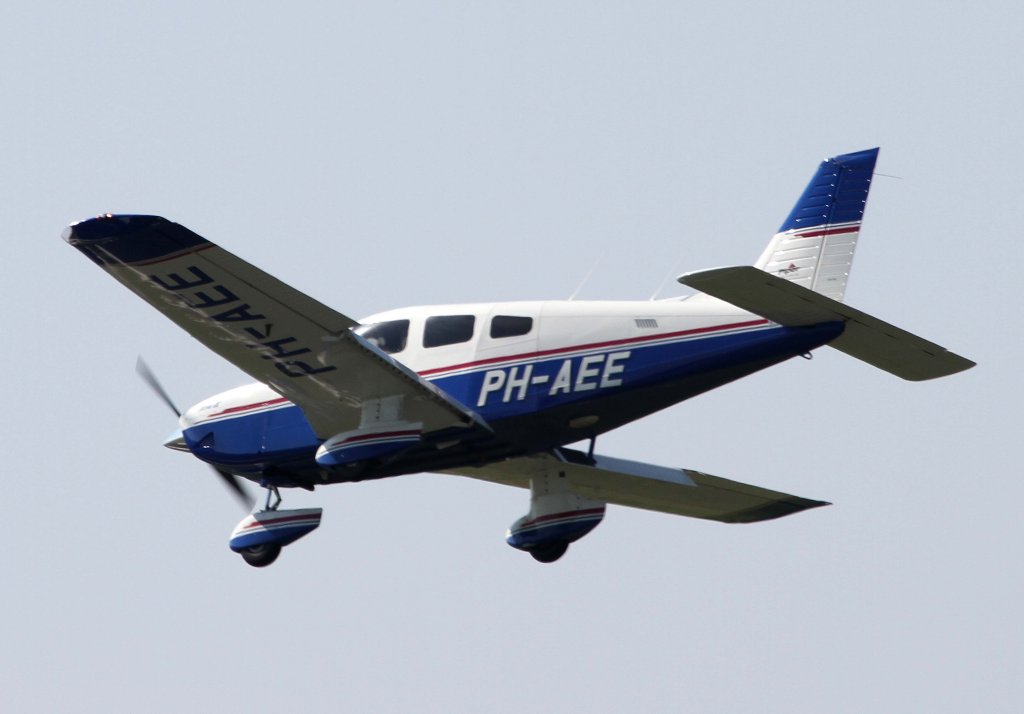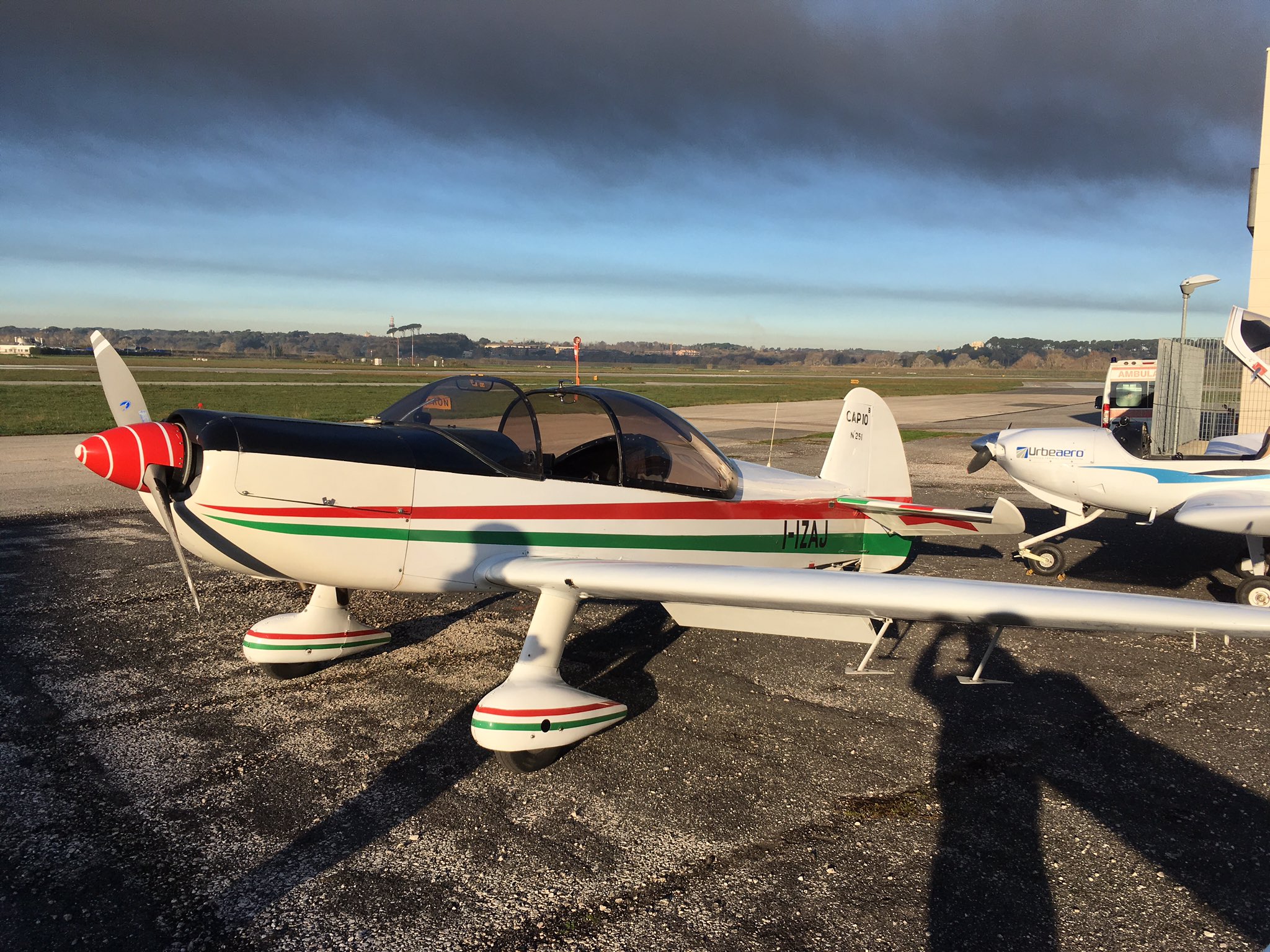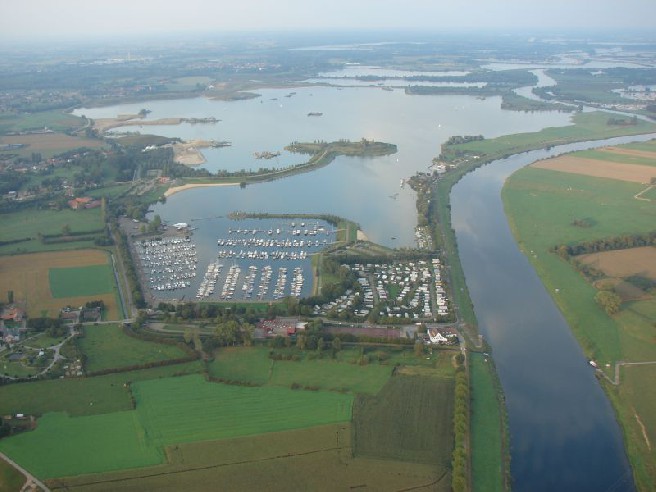One of the things I always wanted to do is flying. As a kid I read books about airplanes and my engineering degree is actually in Avionics. Because I couldn’t afford the real thing as a student and in my early career, I spent hours on PC flight simulators of different flavours and platforms. Later I picked up glider flying for a few years. Got to flying solo but never reached my gliding license because the activity took a big part out of my weekends – thereby putting pressure on the already stressed work/life balance.
So I started to take flying lessons for propeller airplanes in 2005 but then quit again for a few months (which quickly became years). Picked it up again in 2010 and got my Microlight license quickly. I considered buying a microlight myself or with a group instead of renting, but then got the opportunity to join a great group of enthusiastic pilots who were considering to buy a larger 4-seat aircraft next to their existing Light Sports Aircraft, for which I needed a different pilots license. So I got my PPL (Private Pilot License) in 2012 and joined the group of (then) 7 pilots while in the meantime searching for a good but reasonably cost-efficient 4-seater, which we found late 2012 and own since 2013.
Here some information on the airplanes, flying and how we are organized in case you want to come fly with us.
Location
Flugplatz Grefrath – Google Maps
Kites
We have 2 aircraft: a Piper Archer III, registration PH-AEE, shared by 9 owners, and a Mudry Cap-10 , registration PH-CPT (formerly I-IZAJ), shared by 2.
The Aerospool Dynamic WT9 LSA, registration PH-FLA (First Light Aircraft 😉 was sold.
PH-AEE (Piper Archer III)
 The Archer is a 4-seats sports plane, built in 1997. It’s a certified aircraft which means safety design, maintenance etc must be conform high standards. Piper Aircraft has built over 32,000 PA-28s in various generations and variations since 1962 which means it’s a proven and solid design, and the Archer III is still in production as the Archer LX (same aircraft but with full digital panels, we still have analog “steam” gauges). The fuselage and wings are made of Aluminium which guarantees a long and corrosion-free life. Max takeoff weight: 1150 kg. The engine is an 180HP Lycoming and runs on Avgas (high-octane petrol) but we had it converted so it can also run on less-expensive Mogas (“Super-98” petrol). The PH-AEE features leather seats, autopilot, and is IFR capable (which means you could fly it on instruments if you have an instrument rating on your license). The engine runs at a much lower RPM which makes it less noisy in the cockpit. Speed is roughly the same as the Dynamic: 200-210 km/h and the same range (1000 km).
The Archer is a 4-seats sports plane, built in 1997. It’s a certified aircraft which means safety design, maintenance etc must be conform high standards. Piper Aircraft has built over 32,000 PA-28s in various generations and variations since 1962 which means it’s a proven and solid design, and the Archer III is still in production as the Archer LX (same aircraft but with full digital panels, we still have analog “steam” gauges). The fuselage and wings are made of Aluminium which guarantees a long and corrosion-free life. Max takeoff weight: 1150 kg. The engine is an 180HP Lycoming and runs on Avgas (high-octane petrol) but we had it converted so it can also run on less-expensive Mogas (“Super-98” petrol). The PH-AEE features leather seats, autopilot, and is IFR capable (which means you could fly it on instruments if you have an instrument rating on your license). The engine runs at a much lower RPM which makes it less noisy in the cockpit. Speed is roughly the same as the Dynamic: 200-210 km/h and the same range (1000 km).
The airplane is built much more for comfort and stability than for agility. Because of the larger weight but also because of the wing shape you feel much less of any turbulence. There’s a large baggage compartment which makes it an ideal airplane for longer distance travels because it easily fits a few large suitcases. But with 4 grown-ups and full baggage you easily get a bit over maximum weight so in those cases you need to leave with less than full fuel tanks. Back seat passengers have a bit limited view due to the low-wing design and back seat space is also a bit limited. A new Archer LX with “glass” (digital) cockpit panels would cost roughly Eur. 300.000,- where we live, but ours was second hand and does not have the digital cockpit so we picked it up for a lot less.
PH-CPT (Mudry CAP-10)
 The CAP-10 is a 2-seat tailwheel aircraft. It can be flown very nice and smooth and is a reasonable cross-country tourer, but in the right hands it becomes a very capable aerobatic kite. The PH-CPT was built in 1993 and has serial number 251. You could compare the CAP-10 to a classic sports car – there is no power steering or traction control and much like a classic Porsche 911 it has a tendency to “ground loop” if the pilot is not careful. It has an elliptic wing design (comparable to the Spitfire) allowing it to do aerobatic manouevres without loosing too much altitude.
The CAP-10 is a 2-seat tailwheel aircraft. It can be flown very nice and smooth and is a reasonable cross-country tourer, but in the right hands it becomes a very capable aerobatic kite. The PH-CPT was built in 1993 and has serial number 251. You could compare the CAP-10 to a classic sports car – there is no power steering or traction control and much like a classic Porsche 911 it has a tendency to “ground loop” if the pilot is not careful. It has an elliptic wing design (comparable to the Spitfire) allowing it to do aerobatic manouevres without loosing too much altitude.
Unlike many other aerobatic aircraft, the seats are side by side which makes it more suitable for instruction or for taking a passenger. The canopy offers great visibility. The engine has inverted oil and fuel systems so it can fly inverted for indefinite time (until you run out of fuel of course).
PH-FLA (Dynamic)
 The Dynamic was a 2-seats light sport aircaft, built in 2011 and we were the first owners but sold it a few years ago. Aerospool originally built high-performance gliders and you can see that in the design, everything is highly streamlined and smooth, and feels robust and strong. The fuselage as well as the wings are made out of composite carbon.
The Dynamic was a 2-seats light sport aircaft, built in 2011 and we were the first owners but sold it a few years ago. Aerospool originally built high-performance gliders and you can see that in the design, everything is highly streamlined and smooth, and feels robust and strong. The fuselage as well as the wings are made out of composite carbon.
Max takeoff weight is 550kg and cruise speed around 200 km/h. There’s a small baggage compartment limited to 20kg total. Because of a large canopy there’s an excellent view for both occupants and the aircraft is very agile and highly controllable. Extra features of the PH-FLA include an autopilot, “glass panels” (digital instrumentation), tow hook (for pulling gliders or banners), traffic monitor and other luxury add-ons. It runs on Euro-95 or 98 fuel (Mogas).
Due to the light weight and agile design you also feel any air movement (i.e. turbulence) which is great for us pilots but not always comfortable for passengers…
Max range: roughly 1000 km. Price (new): roughly Eur. 140.000,-
Navigation
In the old days you had to find your way with a map and a compass. But these are modern times and so we usually navigate using GPS and moving maps on iPad (much like your TomTom car navigation). If the iPad fails we can use an iPhone as backup or use the built-in GPS in both aircraft. And if all fails you can ask Air Traffic Control for guidance (but we hope we never need to). Some of the flying club members are more “old-skool” and insist you should always fly on paper charts and compass. I’m not one of those – I think the electronics revolution made aviation much safer because the system can warn us for restricted and forbidden airspaces or even mountains (cumulus granitus), you never get lost (even if visibility is poor) and it removes a lot of workload for the pilot so he can pay attention to other traffic, radio communication or just enjoy the scenery.
Safety
People often ask if you crash when the engine stops. Fortunately that’s not the case – without engine, the airplane is basically a not-very-efficient glider, so you will lose altitude rapidly but you keep flying. So then you quickly need to find a grass field or other flat surface to make a quick emergency landing. The more altitude above the ground you have, the more time and distance is available to find a good spot. The technique to make landings without engine is part of the pilot training but of course if it really happens, things can get interesting – especially if it happens at low altitude or rough terrain conditions. Fortunately aircraft engines are built with very high reliability requirements such as double ignition that’s not dependending on battery power, full or partial air-cooling (not depending on oil or cooling liquid alone) etc.
Also some people are scared of turbulence. But to break an aircraft in mid-air, the turbulence has to be very strong – which typically only would happen if you would fly straight into a thunderstorm or really mistreat the aircraft on purpose (for example by pulling very steep turns at a high speed causing a lot of G-force). Heavy turbulence can be very inconvenient and cause air sickness but it’s not directly dangerous.
Common wisdom is that flying is extremely safe. Now that wisdom applies to commercial passenger aviation, small private aviation is not as safe as flying with the big guys. It’s roughly comparable to motorcycling – both in statistics as well as in the major cause of accidents: Pilot/driver error (and very often ‘error’ actually means over-confidence, taking risks, ignoring safety measures and such). For both pilots and bikers the same rule applies: there are old guys and bold guys, but you rarely see old bold guys on a motorcycle or in the pilot’s seat.
License
Our kites require a pilot’s license with SEP rating (Single Engine Piston). I currently hold a PPL with SEP rating that allows one to fly airplanes with one piston engine (and propeller), max takeoff weight roughly 5700 kg under visual conditions (i.e. during daylight, not in clouds or fog and reasonably good visibility). It’s valid in the entire European Union and on request in some other countries as well. Additional training and ratings are required for multi-engine and/or turbine engines, tailwheel, high-performance and for night flying/instrument flying (but I don’t have any of those – yet 😉
A common myth is that private pilots need to fly a lot of hours to keep their licenses valid. The reality is that we only need to fly 12 hours per 2 years minimum – which is, in my opinion, by far not enough to stay proficient. Last time I checked my flight log I was doing roughly 75 hours per year.
Cost
Within our group we all bought an equal share in the airplanes which is the first part of the cost (acquisiton). Then there’s fixed cost such as hangar space, insurance, regular paperwork, fees for usage of our home airstrip etc. This is what you pay before flying a single hour. Also there is some cost involved for licence renewals, frequent checkouts with instructors, medical validation, subscription to digital navigation software etc.
The variable cost is calculated (in our case) per minute of real flying time and includes fuel, oil, reservations for maintenance and unexpected repairs, etc. Within our group we agreed a fixed price per flying minute to smooth out variations in fuel cost and to make administration a lot easier. If you want to fly with us we ask you to pay for the variable cost (without a commercial license you’re not allowed to make a profit but it’s allowed to be compensated for the expense).
Send me a private message if you want to come flying and I will notify you of actual hourly rates.
Additional cost such as landing fees on other airports are expected to be paid by the passengers as well as pilot’s fuel (hamburger + coke). That said, we’d be very happy to fly to far locations if you like, just ask to see what’s possible.
For a sightseeing trip around the Venlo area we can establish a fixed price up front to avoid disappointments when we fly a few minutes more or less. One hour of flying is more than enough to fly over the enormous brown coal mining facilities across the border in Germany, and the Meuse river area near Roermond.

![]()

One thought on “Come fly with me”